2025 Polestar 3 swings for efficient performance
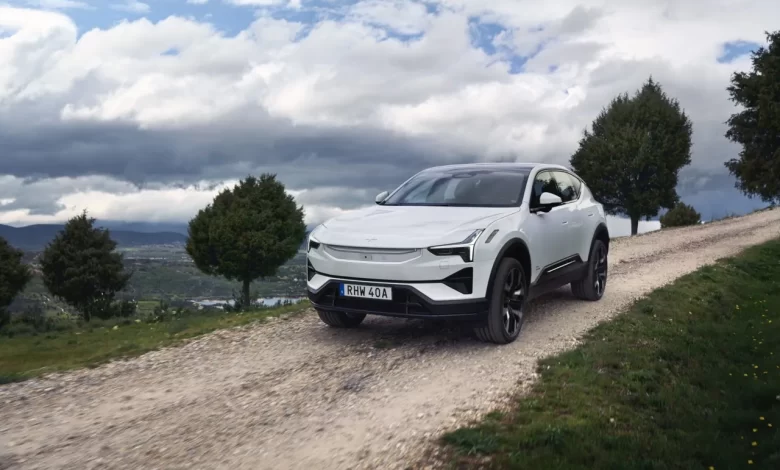
-
Two-row, five-seat electric SUV
-
Estimated range: 279 miles (Performance Pack), 315 miles (base)
-
0-60 mph, 4.8 seconds (base); 4.5 seconds (Performance Pack)
-
Price: $80,300, Launch Edition; may be eligible for Federal incentives
Polestar’s new electric SUV has been delayed by software issues, and it has seen sister brand Volvo has cut its funding, leaving the fledgling EV brand on its own to forge a new path.
But that path seems brightly lit, now that we’ve driven the 2025 Polestar 3. It’s not the most efficient electric SUV on the road; the Tesla Model Y easily outpaces it there. But the sleek new EV revels in ride and interior quality that set it apart from that groundbreaking, bestselling model.
Polestar sees the 3 also as a rival for the hybrid-enabled Porsche Cayenne, and it obviously treads some of the same ground as its platform-mate, the upcoming Volvo EX90. But if nothing else, the 3 reminds me of a XC90, in its poise and low-gloss refinement—with a decade’s worth of structural and efficiency improvements logged in like code revisions.
If there’s an electric-car denier in your household, this might be the vehicle to change their mind.
2025 Polestar 3 Performance Pack, test drive, Madrid
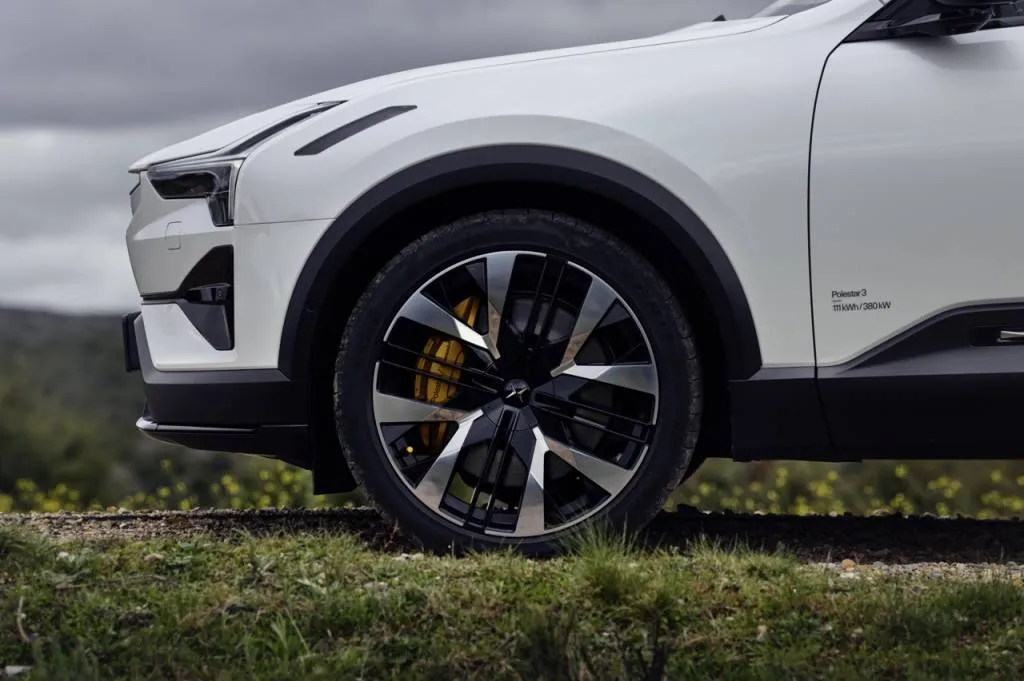
2025 Polestar 3 Performance Pack, test drive, Madrid
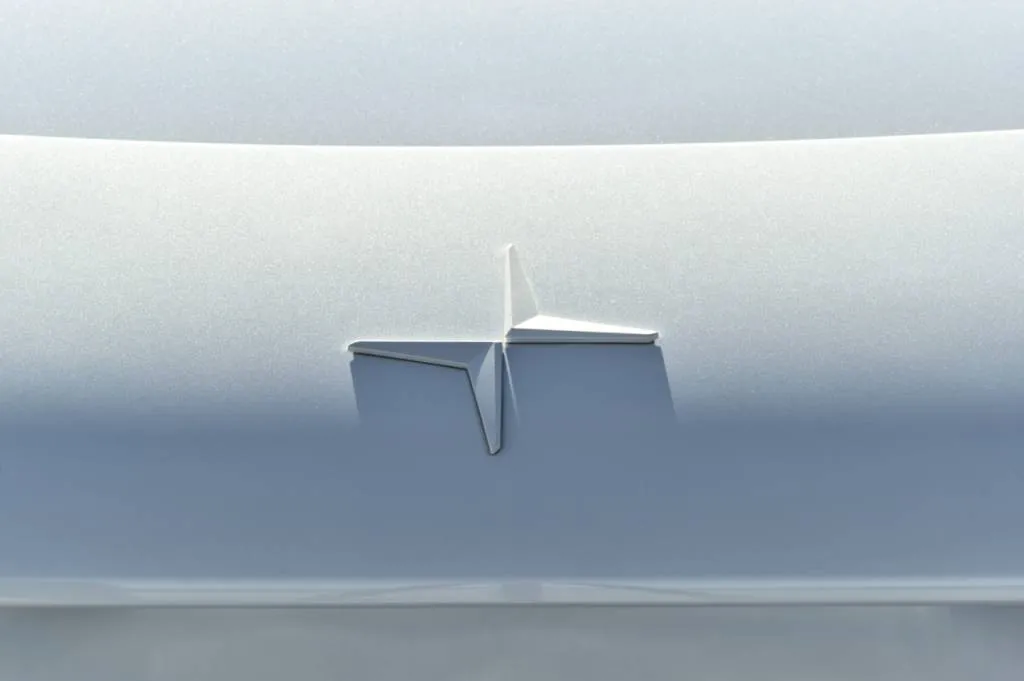
2025 Polestar 3 Performance Pack, test drive, Madrid
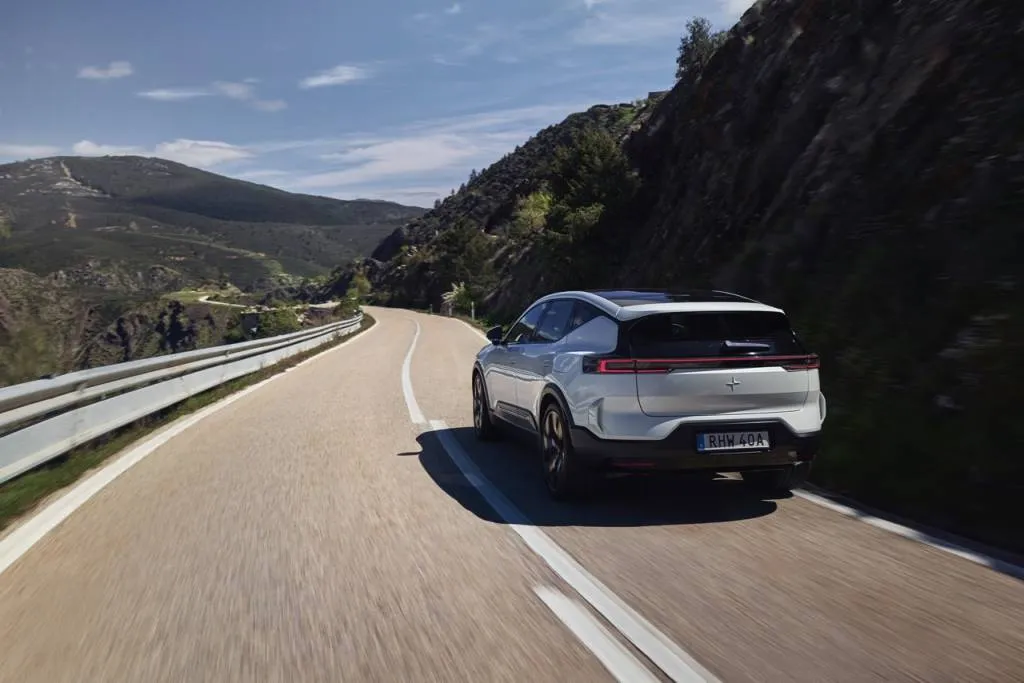
2025 Polestar 3 Performance Pack, test drive, Madrid
How does the 2025 Polestar 3 perform?
-
111-kwh battery pack (107 kwh usable), twin 180-kw motors
-
Range: 315 miles; Performance Pack, 279 miles
-
0-60 mph: 4.5-4.8 seconds (base vs. Performance Pack)
-
2.2-2.6 miles per kwh (our estimate)
On a recent test drive from the center of Madrid to Segovia and back, the Polestar 3 sped along motorways and dove through niches between high hills, leaving only behind positive driving impressions. It packs on a lot of weight to deliver luxury-car feel, but doesn’t leave precision behind.
The basic layout of the dual-motor, all-wheel-drive Polestar 3 puts identical 180-kw motors at the axles, framing bracketing a 111-kwh battery pack with 107 kwh of usable energy. Polestar rates the setup at 489 hp and 620 lb-ft of torque, which propels the SUV to 60 mph in 4.8 seconds.
Add on the Performance Pack for $6,000, and Polestar jailbreaks the battery and motors for another 28 hp and 51 lb-ft of torque. There’s more in terms of suspension tuning and subtle cosmetic changes like gold-painted Brembo brake calipers and gold seatbelts, but the bragging rights here extend mostly to a 0-60 mph time of 4.5 seconds. Top speed stays put at 130 mph.
All that hustle comes at some cost. The SUV can decouple its rear electric motor to improve efficiency—and in doing so can drive for up to 315 miles of Polestar-estimated range, but that dips to 279 miles with the Performance Pack. Those figures are on par with the standard Model Y, but fall behind those of the Tesla’s performance edition, in part because it outweighs that car by about 1,500 pounds, at 5,886 pounds in its portliest configuration.
But the Polestar 3 carries a marked advantage over Tesla in the way it grips the road without white-knuckling it. It’s configured for agile but compliant handling, with its quick-ratio electric steering, a twin-clutch rear axle that distributes power more simply than a third motor might, and, in this model, two-mode air springs and adaptive damping. There’s precious little extra steering motion involved here—the Polestar 3 takes direction snappily—and it irons out pavement admirably, even on vehicles with 22-inch wheels. Tesla’s sometimes brittle ride quality can’t muster this sophistication; nor does it pay the range penalty from the air suspension’s power-hungry ways.
Polestar’s one-pedal drive mode leaves the rubber-band regenerative braking to other vehicles. It’s smooth, perhaps too gradual in its onset even in the most adventurous regen setting (there are three). Its friction brakes blend in well, and have 15.8-inch vented front discs to haul down one hefty vehicle. Performance Pack cars get those 4-piston Brembo calipers and more taut tuning, but we spent only a brief stint in one and will have to wait for a longer, U.S.-based drive before saying more.
Drivers can toggle their Polestar 3 through drive modes that spare some battery or throw range caution to the wind. The 3 also has driver-selectable modes for ride and steering firmness, but all are buried behind an icon on the all-important touchscreen.
A firm suspension and steering setting don’t intrude much at all on its poised manners—but it’s irritating to have to stop to tap into a different mode safely.
A tap taps Off-road mode, too, and that grants the Polestar 3 another two inches of ground clearance beyond the usual 8.3 inches. Standard self-leveling assistance with the air springs help it along to an overall towing capacity of 3,500 pounds.
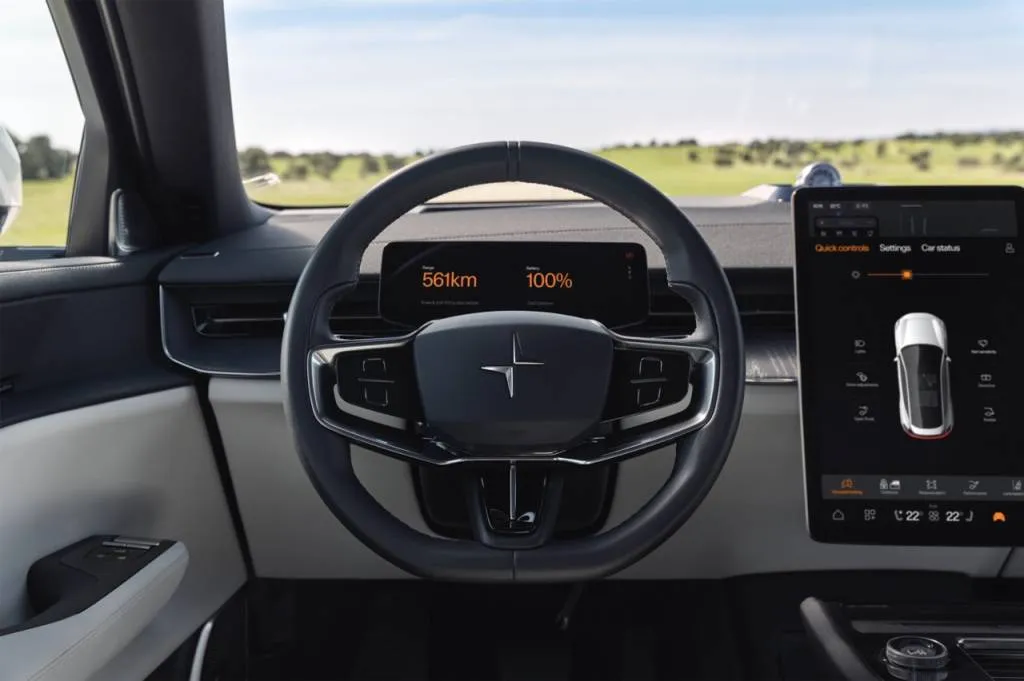
2025 Polestar 3 Performance Pack, test drive, Madrid
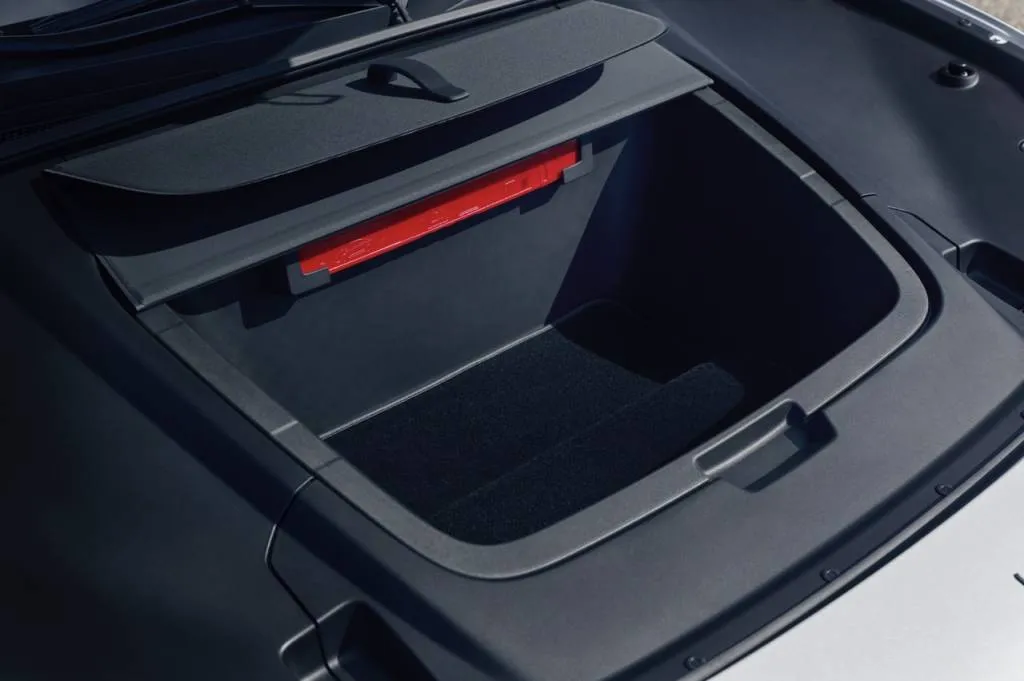
2025 Polestar 3 Performance Pack, test drive, Madrid
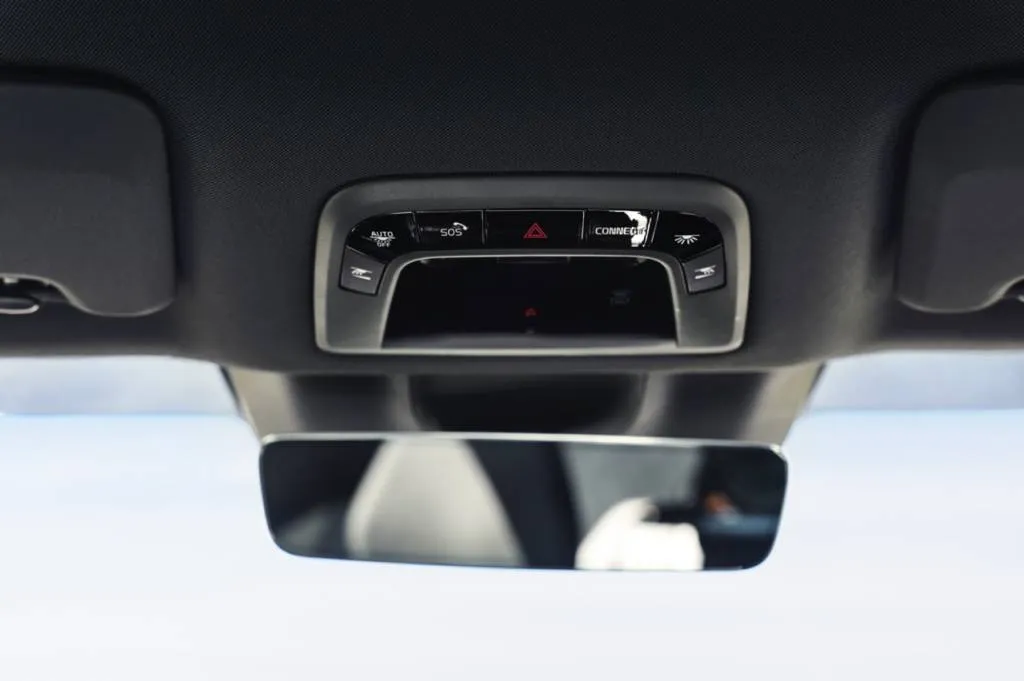
2025 Polestar 3 Performance Pack, test drive, Madrid
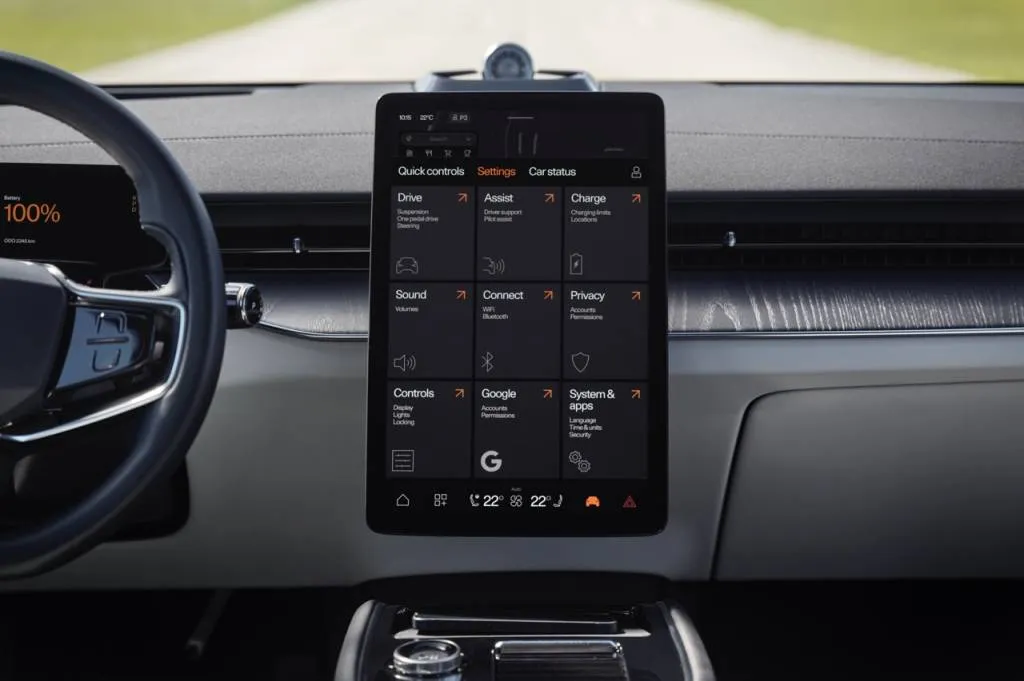
2025 Polestar 3 Performance Pack, test drive, Madrid
2025 Polestar 3 outglams the Model Y
-
192.9 inches long
-
117.5-inch wheelbase
-
1.1 cubic-foot front trunk
-
17.1 cubic feet of cargo space behind the rear seats
-
49.8 cubic feet of room behind the front seats
The Polestar 3 caps its capable EV skateboard with passenger space outfitted in high Scandinavian style. That means low-gloss everything and minimal fuss—maybe too minimal by a degree.
The tapered body sets a specific SUV tone, one that reads more like a sport wagon. With all its seams tightened and flattened for less drag, the 3 has a distinctive tool across its nose for better aero: a wing split beneath the pickaxe logo into three sections, which direct the wind over the body and toward the tail, where another wing shuttles it downward. Polestar has no styling rules to break, so why not?
Inside, the cabin conforms much more readily to the Swedish norm, inspired and iterated to a new benchmark. A single line cuts across nearly the whole dash, bisecting soft trim from wood or aluminum pieces with a strip of air vents hidden only in part by the 14.5-inch portrait-style touchscreen. A 9.0-inch rectangular display on the steering wheel broadcasts basic information while a head-up display throws more detail up on the windshield.
Set-up of these displays and the seats, mirrors, and other firmware can be a pain. Polestar buries most of the controls in touchscreen functions, and draws its icons in pale, thin fonts. Need to adjust a side mirror? That requires a tap or two, then a flick of steering-wheel controls to move it into place. It’s a fussy procedure that maybe future drivers will take as gospel. The rest of the interior gets put on mute, especially when it’s dressed in gray and black. On the upside, the materials rise a magnitude or three above the Tesla norm, and the few glints of character—like the gold seatbelts on the Performance Pack car—matter all that much more in contrast.
Polestar’s Volvo cousin has long claimed some of the best seats in the automotive universe, and these are no different, with lots of adjustments available to the side, back, and bottom bolsters. The back seat benefits from wide door cuts and a deep, properly angled seat bottom. Upholstery ranges from synthetic leather in base vehicles to nappa leather or wool. Folding down the rear seatbacks renders the Polestar 3 almost ready for car camping, with more than 70 inches of interior length. That sounds overly pragmatic for a car with doors that close without a clang, or propulsion that barely emits a legally required burble. So let’s call it car glamping.
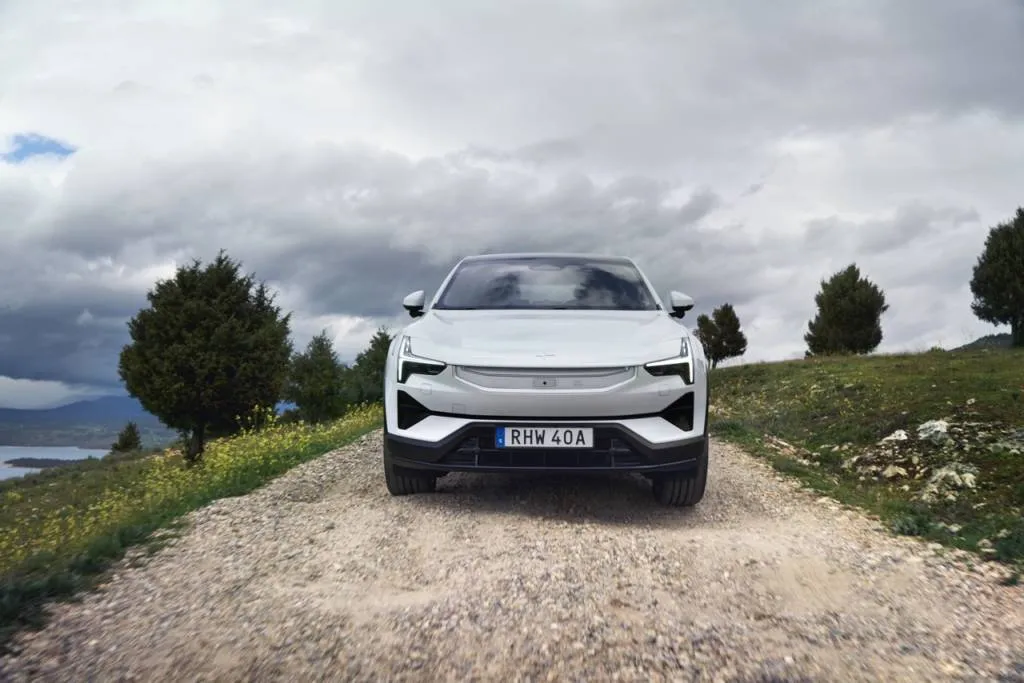
2025 Polestar 3 Performance Pack, test drive, Madrid
What’s the 2025 Polestar 3’s price?
The $80,300 Polestar 3 Launch Edition saw a recent price cut to get it under the amount that would make it eligible for the $7,500 federal EV tax incentive, but it’s unclear whether it will be eligible for those who purchase as well as those who lease. The very first versions will come from China, but as of August 1, Polestar will assemble the 3 in South Carolina. Stay tuned for clarification as to whether it gets that big break.
Launch Editions carry automatic emergency braking, adaptive cruise control, 20-inch wheels, a surround-view camera system, and synthetic leather trim. Also included on the Launch Edition are features that will eventually be split out into the Plus Pack and Pilot Pack on subsequent 2025 model-year vehicles—features ranging from the head-up display and air suspension to a 25-speaker Bowers & Wilkins audio system. Polestar’s Android interface means there’s no Apple CarPlay, though Spotify and Tidal service have native apps.
A Pilot Pack with lidar gains more sensors that will expand its hands-free driver assistance through OTA updates, as those features become available. And all Polestar 3 SUVs carry a 4-year/50,000-mile warranty that includes three years or 30,000 miles’ worth of free scheduled maintenance.
Base Polestar 3 SUVs will cost $74,300 when they arrive later this year. All in, it’s easy to see a fully loaded model checking in just below $100,000.
Polestar has more vehicles in the pipeline, in addition to the already-available 2 sedan. We’ll tell you more about the Polestar 4 sedan in a few weeks. A Polestar 5 and 6 are coming, too, on a new platform developed in-house and assembled in the company’s own factory. Polestar then plans for a 7 which…will one day replace the Polestar 2. We’re not sure about the naming strategy. But the vehicles so far—while they haven’t set new benchmarks in charging, efficiency or speed—have hit the mark on luxury and EV performance. A 1 here, a 2 there, and now a 3—for Polestar, it’s all starting to add up.
Polestar paid for travel expenses to Spain so that we could bring you this test drive review.



